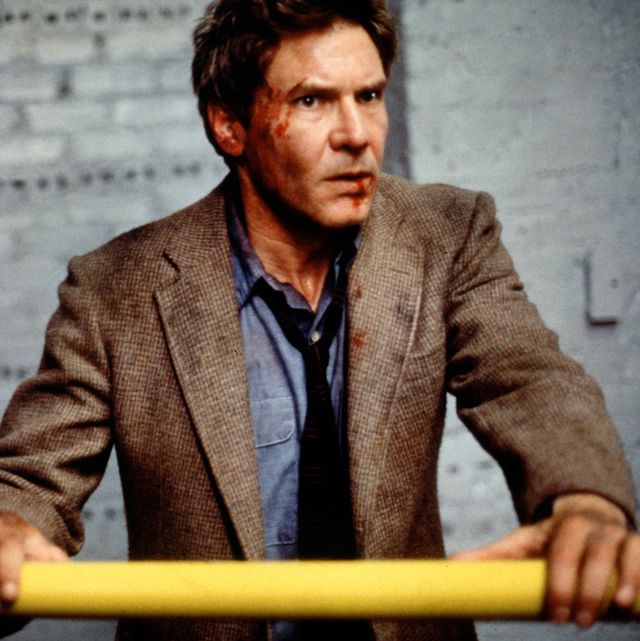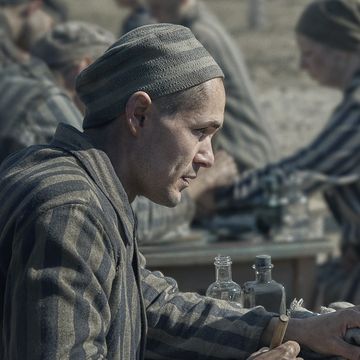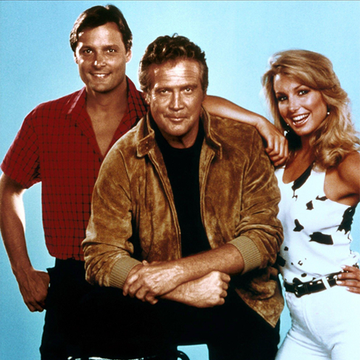Every now and then it’s worth pausing to consider Harrison Ford’s unrivalled 1980 to 1984 run of films. We're talking two Indiana Jones movies, two Star Wars sequels, and Blade Runner – projects that continue to define culture today. Indeed, Ford has spent the last eight years rehashing characters from those films, to mixed results. But there’s more to the actor than snarky lines and arguments over who shot first. Outside of his franchise hits, 1993’s The Fugitive, which turns 30 this week, stands out as a career highlight. This isn’t an overlooked classic – it was critically well-received, and nominated for seven Oscars with Tommy Lee Jones winning best supporting actor – but when was the last time you sat down to give it a rewatch?
If you’re hazy on the details, well, so is Ford’s Dr. Richard Kimble, a surgeon who returns home to find his wife has been murdered. Kimble is promptly walloped around the head and loses consciousness. When he wakes up, it’s into a nightmare. He’s tried and convicted of his wife’s murder and, in a spectacular bus/train crash set piece, escapes to find the real killer, a mysterious one-armed man. Boomers will point to the original TV series from the 1960s, but the Andrew Davis-directed film stands alone.
Neither Ford nor Tommy Lee Jones expected The Fugitive to do well, but Davis’ tight direction keeps the film moving at a solid clip. Every quiet moment was edited out, resulting in a film in which each scene contains some new threat. It helps that everything was done practically. The train crash cost $1.5 million, and the infamous dam jump (riffed on in The Simpsons, where Milhouse is sent plummeting) cost $2 million. At 51, Ford did his own stunts, tearing a ligament in his leg in the process. All of this gives the film a paranoiac realness, a lived-in sense that one wrong move and this could happen to you.
Maturing into middle age, it’s one of the more vulnerable Ford performances. His Dr Kimble is a man who uses his fingers for surgery, not his fists for fighting. There’s terror in his face as he contemplates leaping from that dam. Han Solo would have Chewie catch him in the Millennium Falcon. Indy would have used his whip to swing to safety. For Richard Kimble, it’s a desperate weighing up of the odds: escaping might mean he can find his wife’s killer, but if it goes wrong, he’s dead.
Jones is suitably menacing as the US Marshall tasked with bringing Kimble in. Like his best characters, his Marshall is a man with oceans moving beneath the surface. The story is as much about him as it is Kimble; he doesn’t care if Kimble is innocent, he just wants to bring him in. Later, that changes. The menswear is on point too: Jones’ Marshall jacket is peak ‘90s. Kimble’s woollen pullover, dad parka, crisp white tee and brown tweed suit make for the best dressed handsome-guy-on-the-run movie since Three Days of The Condor.
Two out of three of Ford’s ’80-’84 franchises would later end up under the Disney umbrella. The Fugitive is too smart to become House of Mouse fodder, and treats its audience with this same intelligence. Writing for The Atlantic, Soraya Roberts argued “The Harrison Ford–starring thriller represents the best of a genre that has faded: the character-driven action movie for adults.” She’s right. Films like this haven’t been made for at least a decade and aren’t likely to return any time soon (fugazi riffs are churned out, to be buried in the back end of Netflix). A sequel to The Fugitive already exists in the lacklustre U.S. Marshalls. We don’t need another. Ford’s Dr Kimble beat the odds first time around. Let’s leave it at that.

Tom Ward is a freelance writer and author. He is a winner of the GQ Norman Mailer Award and a PPA Award. Find him at tomwardwrites.com













